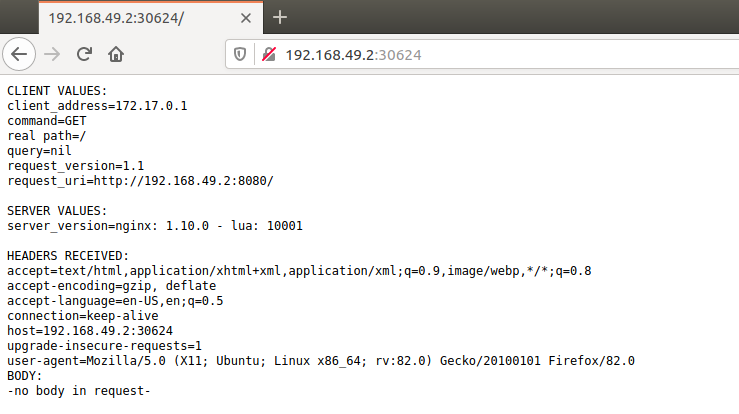Create a hello-minikube deployment and expose it on port 8080 by create and expose command.
kubectl create deployment hello-minikube --image=k8s.gcr.io/echoserver:1.4
kubectl expose deployment hello-minikube --type=NodePort --port=8080- the hello-minikube-xxxx deployment, service and pod will created
- the service type is nodeport
- the namespace is default
Verify the deployment is created
kubectl get deployment -o wide -n default
# NAME READY UP-TO-DATE AVAILABLE AGE CONTAINERS IMAGES SELECTOR
# hello-minikube 1/1 1 1 10m echoserver k8s.gcr.io/echoserver:1.4 app=hello-minikube- Without -n default: namespace, the default namespcae is default.
Verify the service is created
$ kubectl get service -o wide -n default
NAME TYPE CLUSTER-IP EXTERNAL-IP PORT(S) AGE SELECTOR
hello-minikube NodePort 10.105.87.96 <none> 8080:30624/TCP 9m46s app=hello-minikube
kubernetes ClusterIP 10.96.0.1 <none> 443/TCP 44m <none>- Without -n default: namespace, the default namespcae is default.
Verify the pod is created
kubectl get pod -o wide -n default
# NAME READY STATUS RESTARTS AGE IP NODE NOMINATED NODE READINESS GATES
# hello-minikube-6ddfcc9757-kvxcl 1/1 Running 0 8m47s 172.17.0.3 minikube <none> <none>- Without -n default: namespace, the default namespcae is default.
Get the URL of the expose serivce
minikube service hello-minikube --url
# http://192.168.49.2:30624Open browser for checking the application is working.

Delete service, deployment and pod
kubectl delete service hello-minikube -n default
# service "hello-minikube" deleted
kubectl delete deployment hello-minikube -n default
# deployment.apps "hello-minikube" deletedWhen you delete deployment the pod will be terminated and deleted.
Stop Minikube
minikube stop